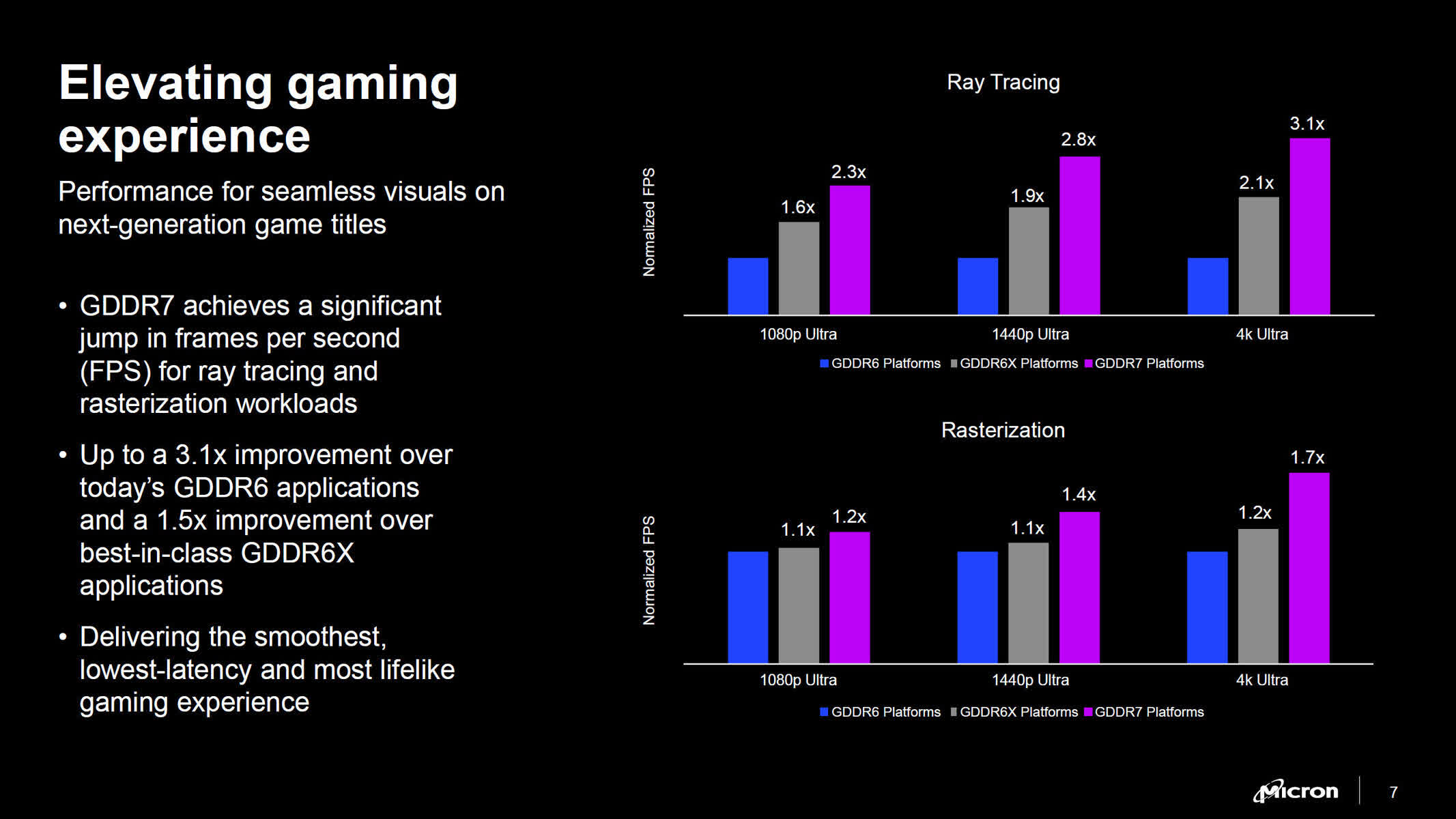Rumor mill: Micron started sampling the first GDDR7 chips earlier this month, stating that the new memory will significantly boost the next generation of graphics processors. A newly released slide provides additional details about the anticipated performance increase.
Micron’s GDDR7 memory is expected to replace both GDDR6 and non-standard GDDR6X chips currently used in modern GPUs for gaming and AI workloads. The Idaho-based company stated that graphics cards built with GDDR7 will provide over 30 percent more frames per second for both ray tracing and rasterization rendering algorithms across the three main gaming resolutions (1080p, 1440p, and 4K).
According to one of Micron’s official slides, players can expect “seamless visuals” and significantly better performance with next-generation games. GDDR7 achieves a substantial jump in FPS for ray tracing and rasterization workloads, providing smooth, low-latency gaming experiences.
The slide indicates that GDDR7 memory chips can deliver up to a 3.1x improvement over GDDR6 applications and a 1.5x increase over “best-in-class” GDDR6X applications. Micron also provides some “normalized FPS” benchmarks in ray tracing and raster graphics, comparing today’s video memory technology to GDDR7 at 1080p Ultra, 1440p Ultra, and 4K Ultra resolutions with unnamed gaming titles.
(Click to enlarge)
GDDR7 hardware platforms appear to excel in ray tracing rendering scenarios, showing a 2.3x FPS increase at 1080p Ultra compared to GDDR6, and a 3.1x increase at 4K Ultra. Normalized FPS performance for raster graphics is also improved, with a 1.2x increase at 1080p Ultra and a 1.7x increase at 4K Ultra.
Nvidia’s Ada Lovelace-based GPUs in the GeForce 40 series use GDDR6X memory chips manufactured by Micron, except for the RTX 4060 and RTX 4060 Ti models, which use GDDR6. The Blackwell architecture is rumored to be unveiled by the end of 2024, with the flagship GeForce RTX 5090 model likely incorporating the GDDR7 memory chips that Micron has recently started sampling.
Speculation about the actual performance levels achievable by Nvidia’s upcoming gaming GPUs is rampant. Based on current information about Blackwell, it is assumed that the GeForce RTX 5090 could be up to 42 percent faster than the GeForce RTX 4090 in raster graphics and up to 48 percent faster in ray tracing graphics.


